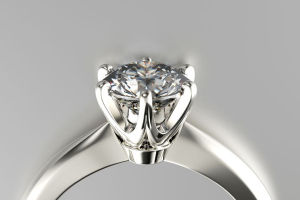Risk of Low-Cost Therapeutic Light Devices

Discover the hidden dangers of low-cost therapeutic light devices, including potential harm to your skin, health, and even electrical hazards.
Light therapies are meant to be safe, effective, and reliable for users. However, these devices come at quite a price tag.
These devices are expensive because of all the safety measures taken to ensure their safety along with the users. However, cheap and poorly-built devices have become quite popular in the market.
These devices can compromise your skin and health, cause cellular damage, and be an electrical hazard. Most of them don’t even ensure customer safety or are certifiably tested.
There are several other risks of low-cost therapeutic light devices that compromise the safety of everyone around them. This is why we discussed in-depth all the dos and don’ts of these devices in this article.
Possible Risks Associated With Low-Cost Therapeutic Light Devices
No matter what you use light therapy devices for, you must first consider their safety factors. This is because low-cost devices come with multiple risks to the users, people, and places around them.
Here are some possible risks associated with low-cost therapeutic light devices -
Premature Aging
Light therapies are meant to be helpful and reliable regardless of their purposes. Generally speaking, all light therapies are said to be safe to use and free from risk.
When using a low-cost therapeutic device, you must take into full consideration how effective and safe it is going to be. This is because low-cost therapeutic devices made using low-quality LED lights can cause premature aging for most people. Instead of helping users prevent premature aging, a low-cost device that has not been certifiably relied upon can promote premature aging.
Light therapies promote collagen production to help your skin remain tight and prevent sagging. However, using low-quality LED lights can be considered rather concerning and have the opposite effect. Low-cost therapeutic devices can cause the collagen in your skin to break down, which helps maintain your skin’s firmness and makes it appear youthful.
Note: The number of LED bulbs for red light therapy and the intensity also make a difference. So, make sure to choose them wisely!
Inconsistent Wavelength
Inconsistent wavelengths are a significant concern when it comes to light therapies. Inconsistent wavelengths on an LED light therapy device can lead to multiple types of skin diseases, along with rashes, blisters, and even potential skin cancer.
Instead of emitting safe and non-toxic wavelengths of light, it is possible for the inconsistency of such lights to be emitting UV rays. UV rays are known to be highly dangerous and potentially lethal if not carefully monitored. It is also possible for inconsistencies to damage receptor cells, which could lead to both temporary or permanent blindness.
If the frequency of the light and its wavelengths are not carefully monitored, its severity can cause irreversible damage.
Although the eyes remain protected under LED light therapies, it is possible for the eyes to take somewhat of a hit and get affected. It is crucial to maintain the wavelength and frequency of light therapy devices to prevent damage to the cells and surface damage to the skin.
Promotes Inflammation And Rashes
Even if the looks, built-quality, and LED lights on low-cost light therapy devices look just as similar as the high-end devices, they are highly likely to be as effective. Light therapies are meant to make your skin appear smooth, soft, and healthy. However, when you use low quality devices, you may witness adverse effects ranging from resulting in blisters, rashes, inflammation, and swelling on the skin.
These may be the results of the lights causing far too much cellular activity or even damaging the cells. The temperature of the light plays a vital role in ensuring your skin does not have to suffer from the LEDs of the light therapy devices.
The too high a temperature from the LED lights can cause rashes or even trigger an allergic reaction to your skin. You may also notice inflammation on your skin if and when the light becomes too much for your skin to handle.
Malfunctioning During Use
One of the scariest things about having electrical devices such as these LED light therapy devices is that they are electrical. Anything electrical poses a threat and the risk of malfunctioning at any given point. The worst of these cases is when the device is actively being used at the moment and tends to witness an electrical malfunction.
Electrical malfunctions for such devices tend to range anywhere from losing connection to getting overheated, lights going off, or even short circuits at times. This is why refraining from gravitating toward low-cost therapeutic devices is extremely important, as they can pose life-threatening risks.
Low-cost devices are known to be made using poor-quality materials that may seem safe to use. However, the wirings, electrical components, LED lights, and protective case from the electrical components and wirings must be very well secured to be safe. Unless the device is certifiably safe or has an FDA-approved stamp, it is best to refrain from using them.
Wiring Complications
Secured wiring on devices used for light therapies must ensure safe, secured, and protected wiring to be safe to use. Wiring complications on low-cost devices are notoriously well-known, as there have been reports of several accidents from using cheap devices that are not even certified.
Most light therapy devices cost a couple hundred dollars if not thousands. The high costs are because these devices are certifiably safe, FDA-approved, reliably sourced, and ensure consumer safety.
Cheap devices don’t ensure any such safety regulations for users and pose life-threatening situations to them. Wiring complications on such low-cost devices are widespread as many companies produce devices trying to compete in the market while jeopardizing the user's safety.
Wiring complications can range from improper connections from one line to another to using poor-quality wires or wires without protective layers. These factors are known to cause fire breakouts or even explode during use.
Bottom Line
Light therapy devices must be safe to use, ensure quality checks, and be from well-renowned companies to prevent mishaps. Generally, light therapy devices can be quite expensive, which is why most people look for cheaper alternatives to it. However, in doing so, most people tend to expose themselves to all the risks that could lead to irreversible damage for one.
Cheap light therapy devices have been known to cause severe damage to users, causing them inflammations, blisters, wiring hazards, and even malfunctioning during use. This is why risk of low-cost therapeutic light devices must be carefully considered before making a purchase.




